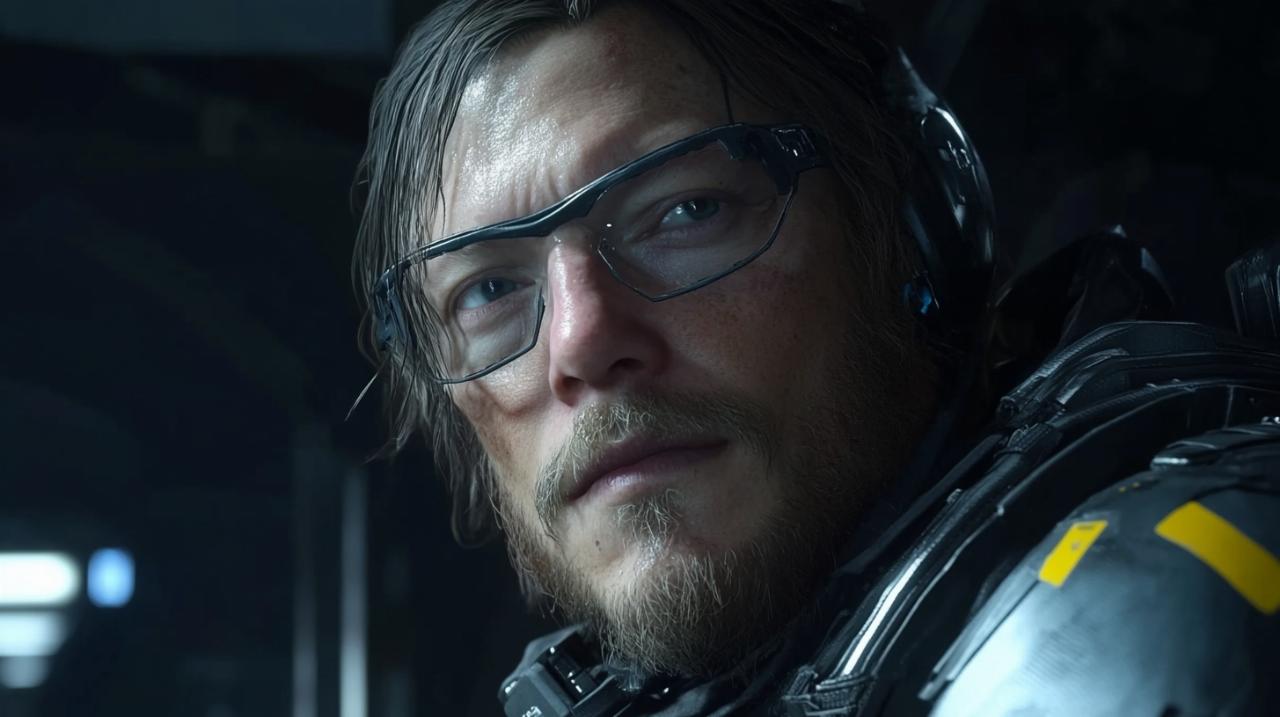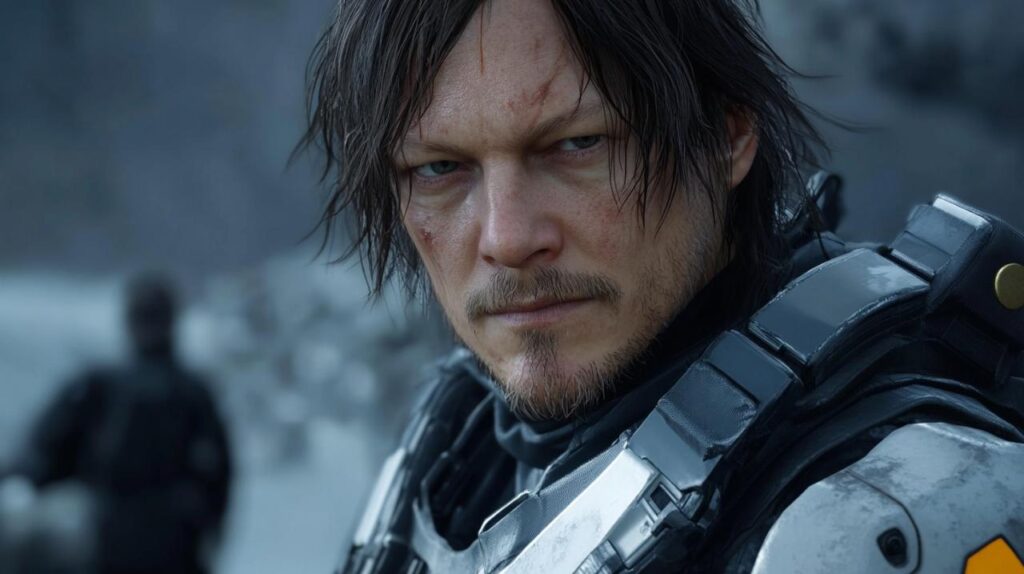In an age where video games have become as culturally significant as any blockbuster film, the medium has attracted some of the most compelling talent from across the entertainment industry. The boundary between virtual worlds and traditional cinema has grown increasingly porous, with performers lending their voices, faces, and emotional depth to interactive narratives. Few projects illustrate this convergence more vividly than Hideo Kojima’s Death Stranding, a post-apocalyptic odyssey that premiered in 2019 and welcomed its sequel in June 2025. Yet the actors who brought these digital characters to life possess careers that extend far beyond the confines of performance capture studios and motion capture rigs, establishing themselves as versatile artists across diverse genres and formats.
From Virtual Landscapes to Silver Screen: The Acting Range of Death Stranding’s Cast
The roster assembled for Death Stranding reads like a curated selection from international cinema, a deliberate choice by Kojima Productions to infuse the game with the gravitas and emotional resonance typically reserved for prestige film projects. This modern life blog entry into the world of interactive entertainment demonstrates how video game directors now curate casts with the same attention to detail as any auteur filmmaker. The seamless integration of these performers into the virtual realm speaks to their adaptability and willingness to embrace new storytelling formats, while their broader filmographies reveal a dedication to craft that transcends medium or genre.
Norman Reedus: Building a Legacy from The Walking Dead to Independent Cinema
Norman Reedus arrived at the role of Sam Porter-Bridges through an introduction facilitated by Guillermo del Toro, a filmmaker whose own creative sensibilities align closely with Kojima’s vision. Long before he navigated the desolate landscapes of Death Stranding, Reedus had established himself as a formidable presence in both mainstream television and independent film. His portrayal of Daryl Dixon in The Walking Dead transformed him into a household name, a character whose gruff exterior and unexpected tenderness resonated with audiences across multiple seasons. Yet Reedus’s commitment to independent cinema remains steadfast, with appearances in atmospheric projects that prioritise character depth over spectacle. His work in films such as The Boondock Saints showcased an early willingness to inhabit morally complex roles, a quality that would serve him well in embodying the weary determination of a courier tasked with reconnecting a fractured society. The transition to performance capture for Death Stranding allowed Reedus to bring a physicality and emotional nuance that few other mediums demand, recording sessions at Sony Santa Monica and Sony San Diego capturing every subtle gesture and inflection. His involvement in the sequel underscores the ongoing relationship between actor and director, a collaboration that has become as central to the franchise’s identity as its thematic exploration of connection and isolation.
Mads mikkelsen: a danish talent’s journey through european and hollywood productions
Mads Mikkelsen’s career trajectory exemplifies the kind of international acclaim that Hideo Kojima sought when assembling his ensemble. From his breakout role in the Danish television series Rejseholdet to his chilling portrayal of Le Chiffre in Casino Royale, Mikkelsen has demonstrated a remarkable ability to inhabit villains and antiheroes with equal conviction. His work in European cinema, particularly collaborations with directors such as Thomas Vinterberg and Nicolas Winding Refn, established him as an actor capable of conveying profound emotion with minimal dialogue. This restraint and intensity made him an ideal choice for Death Stranding, where his character served as both antagonist and tragic figure within the game’s intricate narrative. Mikkelsen’s subsequent projects have continued to showcase his versatility, from the fantasy adventure of Doctor Strange to the intimate character study of Another Round, for which he delivered one of the most celebrated performances of recent years. His willingness to embrace the challenges of performance capture speaks to a broader trend among established actors who recognise the artistic potential of video games as a storytelling medium. The collaboration with Kojima Productions allowed Mikkelsen to explore a character whose motivations are gradually revealed through layered exposition, a narrative structure that mirrors the slow-burn approach often found in European art cinema.
Character depth and versatility: how death stranding performers excel across different media
The actors involved in Death Stranding bring with them not only their talent but also a wealth of experience from film, television, and stage work that enriches their digital performances. The game’s emphasis on connection themes and humanity in a post-apocalyptic world demanded performers who could convey vulnerability and resilience in equal measure. Performance capture technology has evolved to the point where every facial twitch and vocal inflection is preserved, placing extraordinary demands on actors accustomed to traditional filming methods. Darren Jacobs, who portrayed Heartman, a character experiencing cardiac arrest every twenty-one minutes, exemplifies this blend of technical precision and emotional authenticity. Trained in Performing Arts in London, Jacobs brought a background in theatre, film, and voice-over work to the role, having previously contributed ADR for major productions including Guardians of the Galaxy 2 and Dunkirk. The character of Heartman, whose appearance was based on director Nicolas Winding Refn while Jacobs provided the facial expressions and voice, required a delicate balance of scientific detachment and existential yearning. Recording sessions at Sony Santa Monica and Sony San Diego allowed Jacobs to immerse himself fully in the role, a process he found deeply rewarding and one he expressed interest in revisiting for any future instalments.
Léa seydoux: balancing bond films with artistic french cinema
Léa Seydoux represents another facet of the international ensemble Kojima assembled, an actress whose career oscillates between blockbuster franchises and intimate character studies. Her role as Dr. Madeleine Swann in the recent James Bond films brought her to global attention, yet her most compelling work often emerges from collaborations with French directors such as Abdellatif Kechiche and Bertrand Bonello. In Blue Is the Warmest Colour, Seydoux delivered a performance of such raw emotional power that it earned the Palme d’Or at the Cannes Film Festival, a testament to her ability to inhabit complex emotional landscapes. Her involvement in Death Stranding allowed her to explore yet another dimension of her craft, lending her voice and likeness to a character navigating the philosophical questions that permeate the game’s narrative. Seydoux’s commitment to diverse projects reflects a broader trend among contemporary actors who refuse to be confined by genre or medium, seeking out roles that challenge both themselves and their audiences. The crossover between art-house cinema and high-profile video game productions signals a shift in how the industry perceives interactive entertainment, no longer as a lesser cousin to film but as a legitimate avenue for artistic expression.

Guillermo del Toro and Nicolas Winding Refn: When Directors Become Performers
Perhaps the most intriguing aspect of Death Stranding’s cast is the inclusion of filmmakers themselves, with Guillermo del Toro and Nicolas Winding Refn lending their likenesses and performances to the project. Del Toro, whose fantastical visions have captivated audiences in films such as Pan’s Labyrinth and The Shape of Water, has long been an advocate for the artistic potential of video games. His involvement in Death Stranding extends beyond mere cameo, with his character integral to the game’s exploration of life, death, and the spaces in between. Refn, known for stylish and often provocative films such as Drive and The Neon Demon, provided the physical template for Heartman while another actor handled the performance capture. This blurring of roles between director and performer speaks to Kojima’s broader creative philosophy, one that values collaboration and the fusion of different artistic sensibilities. George Miller, the creator of Mad Max, even lent his appearance to a character in Death Stranding 2, a testament to the deep admiration Kojima holds for the Australian filmmaker. The two became friends a decade ago, and Miller’s influence is evident in the sequel’s partially fictionalised version of Australia, a setting inspired by films such as Walkabout and On the Beach. Kojima’s visit to the Sydney Film Festival in June 2025 underscored his ongoing connection to the country and its cinematic heritage, with the director expressing his love for Australian animals during a trip to the zoo. The involvement of musicians such as Woodkid and the band CHVRCHES further enriches the game’s creative tapestry, with the latter contributing both a song to the original Death Stranding and a cameo as animal shelter staff in the sequel. Koichi Yamanoha, performing as Grimm Grimm, contributes music and appears as The Tar Therapist, while Yusaku Matsumoto, a filmmaker, takes on the role of The Architect. Shioli Kutsuna plays Rainy, a key character whose presence adds another layer to the game’s intricate narrative. These collaborations highlight Kojima’s ability to inspire artists from diverse disciplines, fostering an environment where creative boundaries dissolve and new forms of storytelling emerge. The pandemic posed significant challenges to this collaborative process, with remote work proving inefficient and hindering team building. Directing actors from Japan while they recorded in distant studios was described as the worst experience, prompting Kojima to prioritise in-person collaboration by 2022 when he could direct in Los Angeles. This shift reflects a broader understanding within the industry that fostering new talent and building cohesive teams requires physical presence and direct interaction, a philosophy that runs counter to the increasing normalisation of remote work. Death Stranding 2’s tagline, Should we have connected, encapsulates the game’s ambivalence towards the very technologies that enable its creation, a reflection of Kojima’s own feelings of isolation during the pandemic. Yet despite the darker themes explored in the game, Kojima remains hopeful about the power of human connection, a sentiment that permeates both his work and his interactions with collaborators. His dream of travelling to the International Space Station, driven by what he jokingly refers to as Tom Cruise disease, reveals a desire to experience something that would make him feel truly alive, a yearning that resonates throughout his creative output. Kojima Productions celebrated its tenth anniversary as Death Stranding 2: On the Beach launched on PlayStation 5, marking a decade of innovation and artistic ambition. The game’s exploration of connection and humanity in a post-apocalyptic world draws on the talents of performers whose careers span continents and genres, each bringing a unique perspective to the project. Norman Reedus met band members from CHVRCHES at the Game Awards 2019, a moment that underscored the communal spirit that defines the Death Stranding franchise. As the boundary between film, music, and interactive entertainment continues to erode, the actors who navigate these intersections demonstrate that versatility and a willingness to embrace new challenges remain the most valuable qualities in the modern entertainment landscape.

